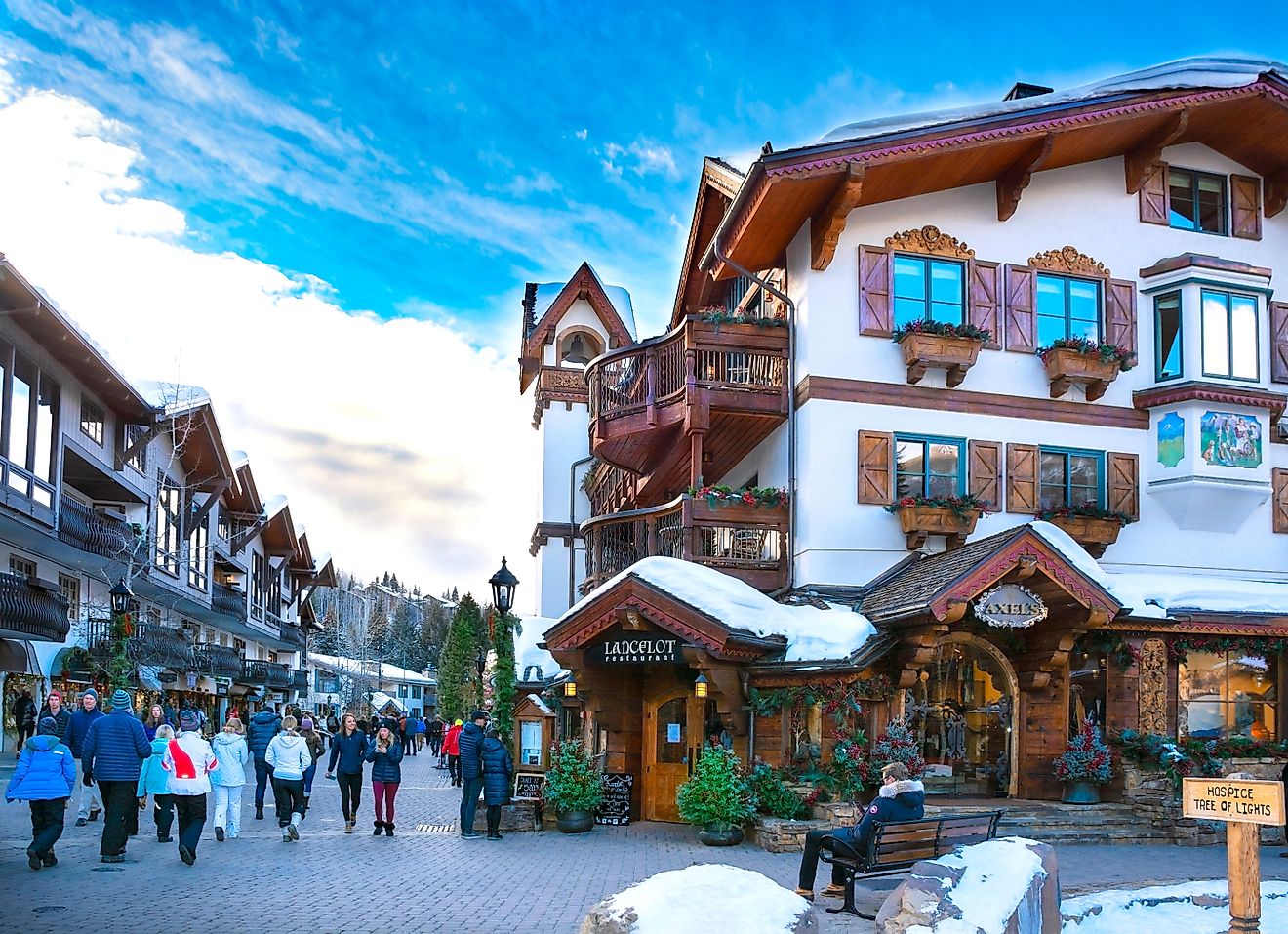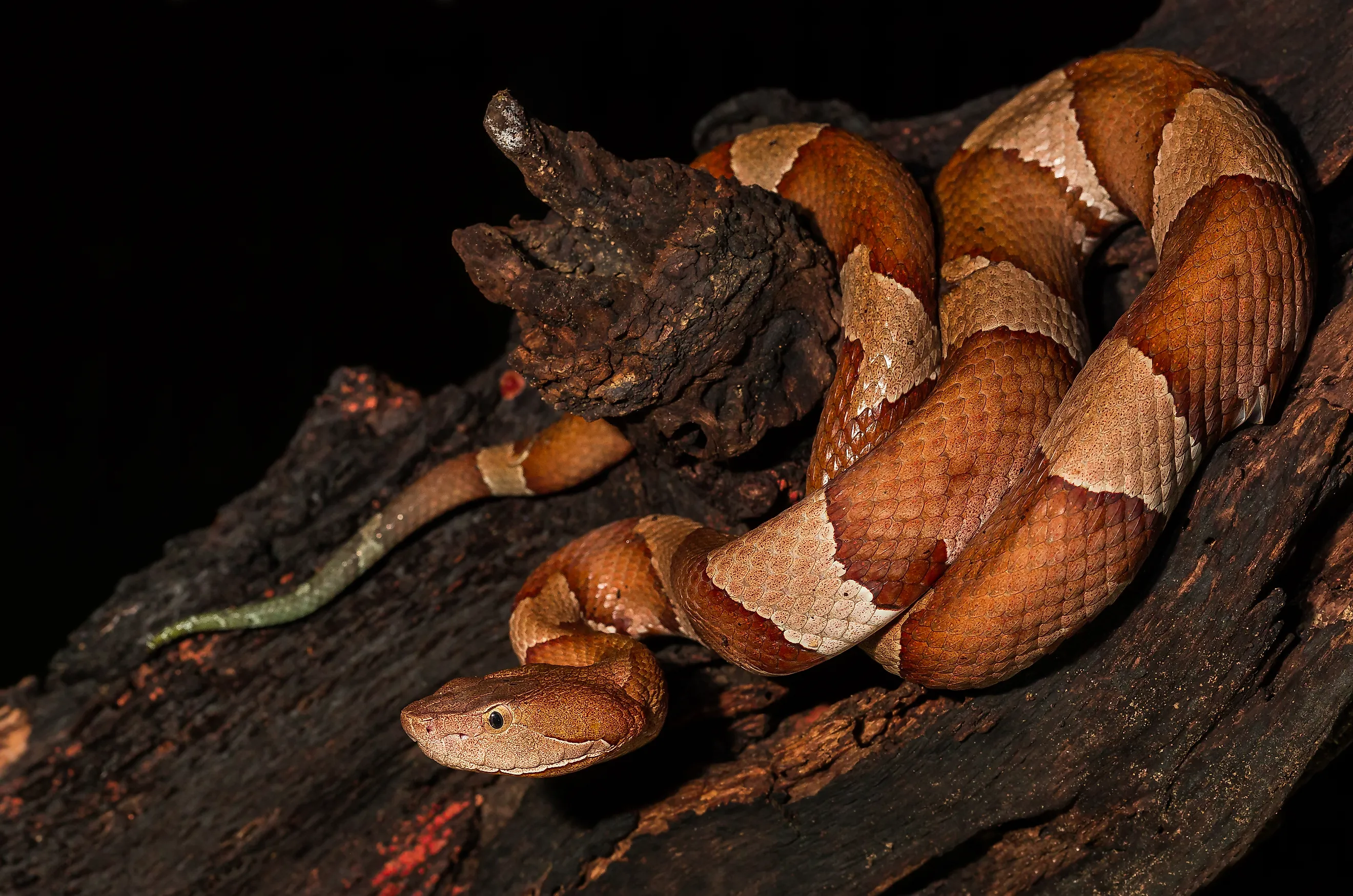
7 Snake Infested State Parks In Mississippi
Home to 55 species of native snakes (six of which are venomous), nope-ropes are simply a fact of life in Mississippi. The very sibilance in the state's name hints at this fact, let alone its plethora of tranquil waters, abundant woodlands, and sultry climate that cold-blooded creatures crave. Though Mississippi's 24 state parks are well utilized by us bipeds, there is enough space and sufficient sources of food (thanks to those fish-filled lakes and lively forest floors) for snakes to set up shop. This list highlights seven such state parks that are particularly snake-infested.
Tishomingo State Park
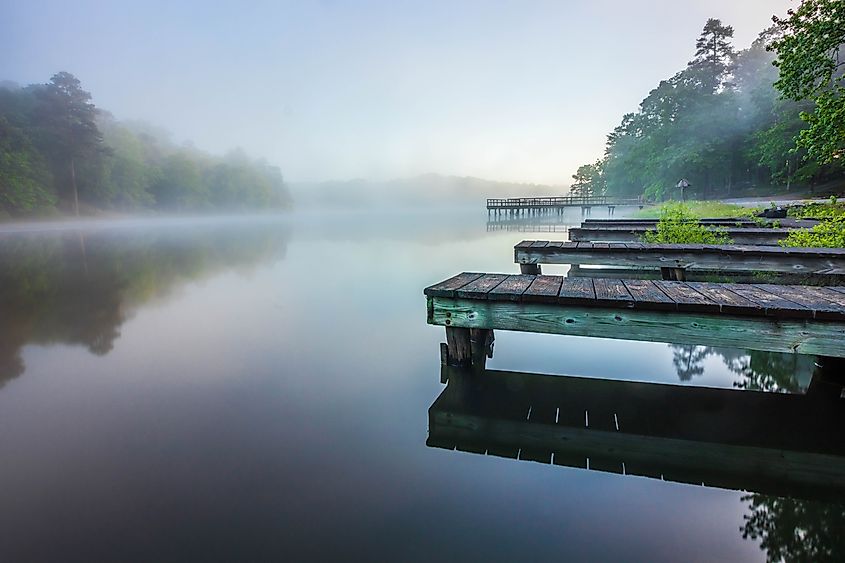
Northeastern Mississippi's Tishomingo State Park resides in the foothills of the Appalachian Mountains, next to the city and within the county of the same name (all in honor of Chief Tishomingo of the Chickasaw Nation). At 1,530 acres, Tishomingo is the largest of Mississippi's state parks. The scenic and historic Natchez Trace Parkway bisects the park, compartmentalizing its two prime attractions: the 25-acre Tishomingo Lake and the Civilian Conservation Corps-constructed Swinging Bridge spanning Bear Creek. In between, visitors will discover some of the best hiking trails around, and, thanks to the substantial rock formations, some of the only outdoor climbing routes in the state.
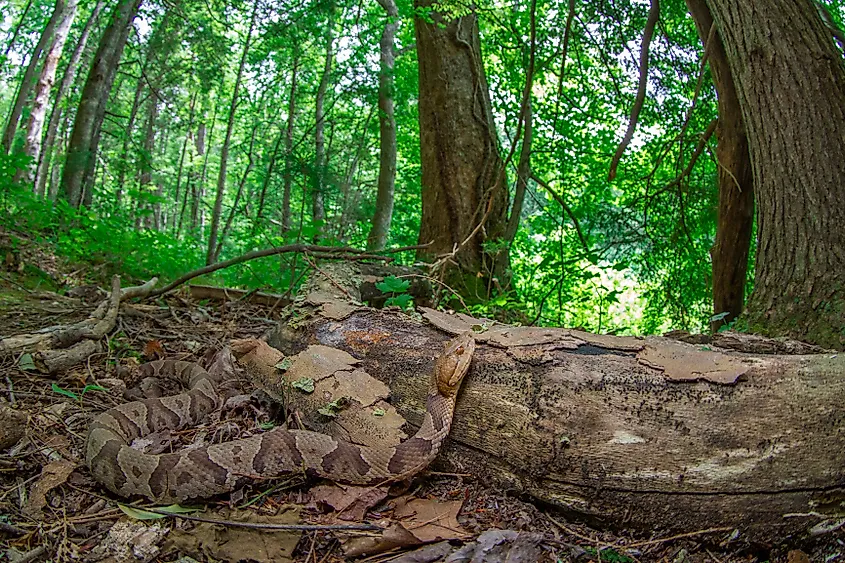
Thanks to all the tree cover, crevices, and slow-moving waterways, snakes are another expected part of the Tishomingo experience. The three venomous species to be on guard for are the copperhead (Agkistrodon contortrix), cottonmouth (Agkistrodon Piscivorus), also known as the water moccasin, and canebrake rattlesnake (Crotalus horridus) - known elsewhere as the timber rattlesnake. A commonly-occurring, though not necessarily commonly-sighted, non-venomous snake in these parts is the aptly-named eastern worm snake (Carphophis amoenus).
Trace State Park
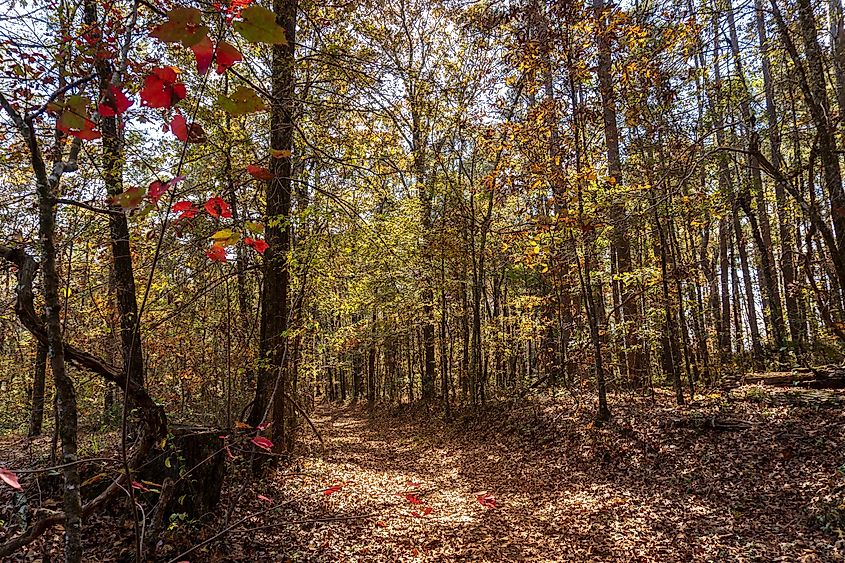
Roughly an hour's drive southwest of Tishomingo State Park, just west of Tupelo, Trace State Park harbors the same three venomous species, in addition to some harmless, if still intimidating, slitherers. Expanding on our established cast of characters, the tanned and dark-blotched copperhead and canebrakes can be distinguished from one another by their hour-glass-shaped vs wavy horizontal overlays, respectively, and the presence of the auditory warning system on the latter's tail. The cottonmouth, as the name suggests, flashes a white fleshy orifice when in strike mode. But in an effort to avoid this last-second identifier, look instead for a dark and hefty-bodied snake either in or near the water (its Latin name, after all, translates as "fish eater"). In terms of Trace's non-venomous camp, there's a good chance of encountering the gray ratsnake (Pantherophis spiloides). This long and slender serpent is an excellent climber (be it walls or trees) and a natural pest suppressant (hence the name).
Though snakes are part and parcel of Trace State Park, there are plenty of touristic assets to write home about. For instance, the 588-acre Old Natchez Trace Lake is great for water skiing, fishing, and kayaking (rentals are available on site). Then there is the 36-mile ATV and equestrian trail network, complemented by another 19 miles of secluded hiking and mountain biking trails.
Paul B. Johnson State Park
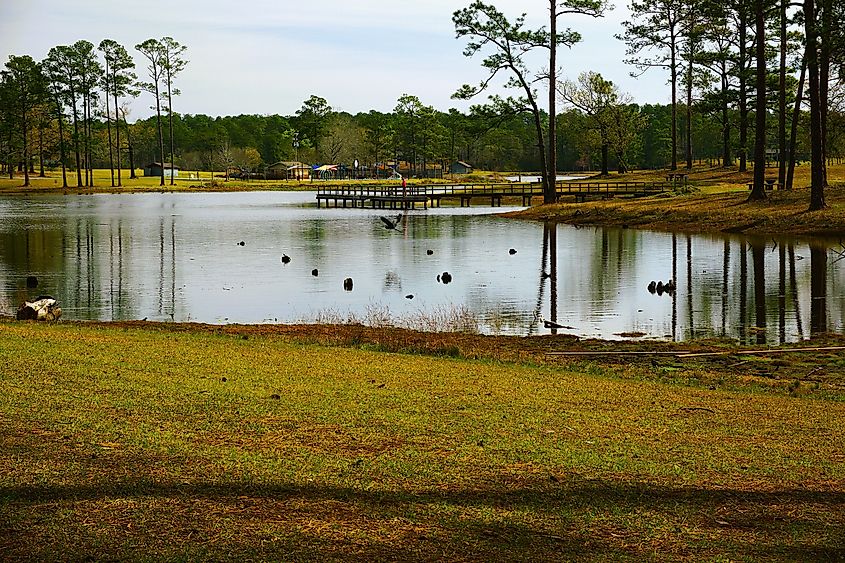
Down in southeastern Mississippi's Pine Belt region, Paul B. Johnson State Park continues the lake-centric, wildlife and outdoor recreation balancing act. This 805-acre park is based around the 220-acre Geiger Lake, with no less than 500,000 additional acres courtesy of De Soto National Forest sprawling far to the south and east. Here, families can rent out renovated cabins and modern duplexes so as to enjoy the multiple designated swimming areas, picnic pavilions, splash zone, and dual 18-hole championship disc-golf courses for days on end.
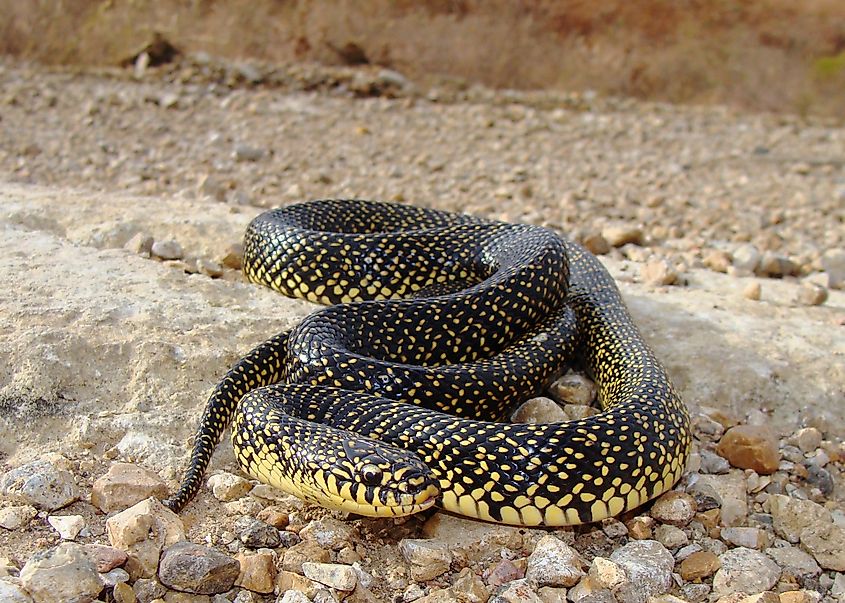
This part of Mississippi tends to see the likes of the speckled kingsnake (Lampropeltis holbrooki), eastern gartersnake (Thamnophis sirtalis sirtalis) - a subspecies of the common gartersnake - and, once again, the gray ratsnake (which, for the record, might in fact be gray, but could also appear brown, or some variation of yellow/green).
Roosevelt State Park
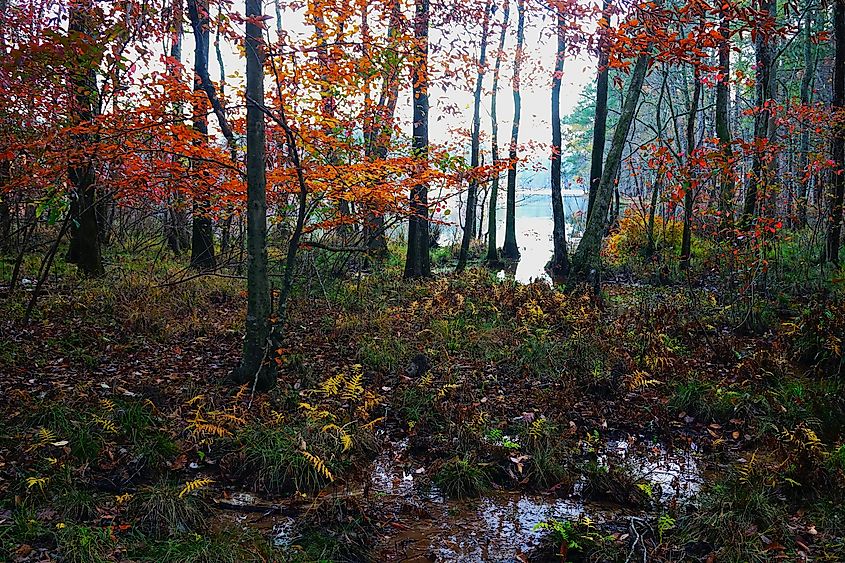
Central Mississippi's Roosevelt State Park sits just outside of the city of Jackson, on the northwestern edge of the nearly 180,000-acre Bienville National Forest. This time, the 150-acre, spring-fed Shadow Lake happily takes center stage. Zip around on a jet ski, board one of the casual lake cruises, or delve into any of the many shoreline leisures, including playgrounds, pools, barbeques aplenty and eight short nature trails. There are also 110 RV campsites to choose from, along with 15 vacation cabins and even a motel.
While Shadow Lake attracts the weekend crowds, it also beckons aquatic snakes. The ubiquitous cottonmouth once again makes an appearance, as does the diamond-backed watersnake (Nerodia rhombifer). Though the latter is commonly confused with the former, and both subsist primarily on fish, the diamond-backed differs in one key regard: it is non-venomous. Another non-venomous, and in this case, terrestrial snake known to occur in Roosevelt State Park is the ring-necked snake (Diadophis punctatus). This little fellow likes to hide under logs, but hikers might spot the odd one out in the light of day. If so, its bright orange belly and singular matching ring at the base of the head are the species' defining aesthetic.
Clarkco State Park
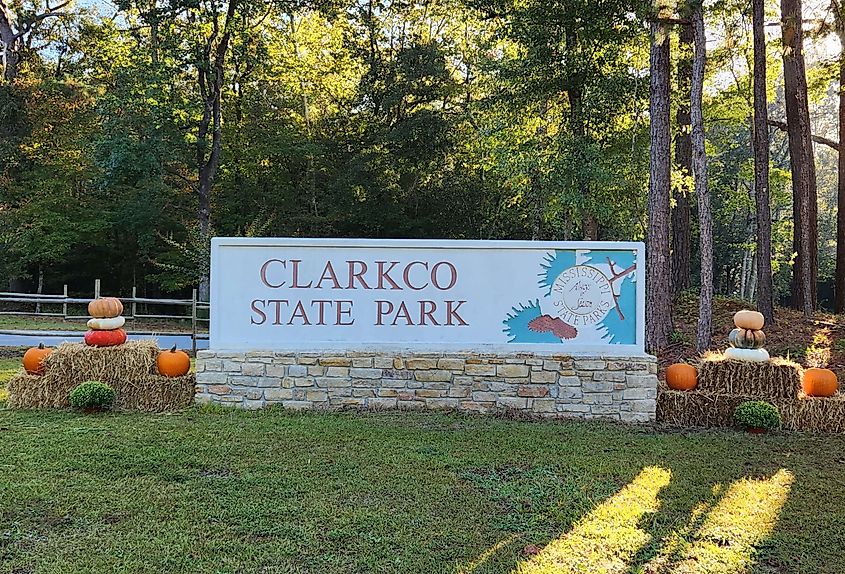
A little over an hour east of Roosevelt State Park, and just a short skip south of the city of Meridian, Clarkco State Park continues the lakeside charm. This 815-acre creation of the Civilian Conservation Corps (circa 1938) contains the modest, yet idyllic Ivy Lake. Stocked with bass, brim, and catfish, anglers are sure to be happy campers, and thanks to the small sandy beach, roped-off swimming area, and kayak rentals ($20 for a half-day; $30 for the full), everyone else can enjoy the water in whatever way suits them best. Those drawn to the verdant surroundings can explore the 14 miles of hiking/biking trails, including a 5-mile, well-blazed perimeter loop.
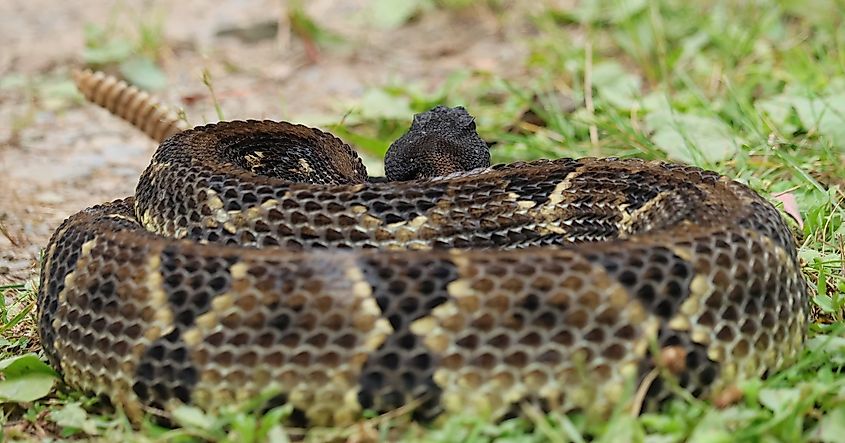
Throughout these mixed habitats, canebrake rattlesnakes and gray ratsnakes might show their familiar faces. And adding a bit of variety to the mix is the southern black racer (Coluber constrictor priapus) - a smooth, jet black (or blueish black), speedy subspecies of the North American racer.
Percy Quin State Park

Jumping over to Mississippi's southwest quadrant, we find a familiar ecosystem. Within Percy Quin State Park's 1,000 acres, there is a 490-acre recreational freshwater lake, forests full of magnolia trees, loblolly pines, azaleas, and other inspiring seasonal flowers, and just the right dose of augmentative infrastructure. Launch onto Lake Tangipahoa via the park's marina, paddle a kayak, cast a line from the docks in hopes of snagging some crappie (or several other stocked species), or just hang out at the beach. Alternatively, your crew can play a round at Quail Hollow Golf Course or test your hidden talents at the archery area.
While going about your weekend, just be mindful that the park's watery focal point does attract the notorious, semi-acquatic cottonmouth. After all, it likes to do some fishing of its own (or will just as easily settle for some unsuspecting amphibians). The highly aquatic diamond-backed watersnake might also skirt along the surface from time to time.
Lake Lincoln State Park

Our last stop on this statewide snake search can be found less than an hour north of Percy Quin. Lake Lincoln State Park is yet another beloved wooded area based around a welcoming and well-stocked water body (in this case, the 550-acre namesake lake). Renovated cabins, well-kept waterfront RV and tent pads (as well as additional, first-come-first serve, primitive sites), disc golf, hardwood hiking trails, playgrounds, volleyball court, and swimming areas mark the periphery in a way that Mississippians have come to expect out of their state parks.
Also in line with local expectations is the healthy snake population that, though typically deterred by crowds, might be found in Lake Lincoln's quieter reaches, or during the bookends of the day. You might spot the ring-necked snake contrasted against fallen roughage. You may also have to share Lake Lincoln with the harmless plain-bellied watersnake (Neorida erythrogaster), also known as the yellow-bellied watersnake (which can sometimes be a helpful point of distinction, though individuals exhibit varying coloration). And then there's the small and nonvenomous Dekay's brownsnake (Stoeria dekayi), which appears just as comfortable in the urban areas of Lincoln County (as per repeated Facebook postings) as it does in the surrounding natural habitats.
Stay Snake Savvy
These seven Mississippian state parks have their fair share of snakes, but that is just one sliver of their full-bodied personality. By staying on marked trails, wearing a headlamp after dark, and giving a wide berth to any coiled, slithering, or swimming creatures that do happen to emerge, there's no reason why we can't all cool off at the lake, gather for a picnic, and sing kumbaya around the campground.




